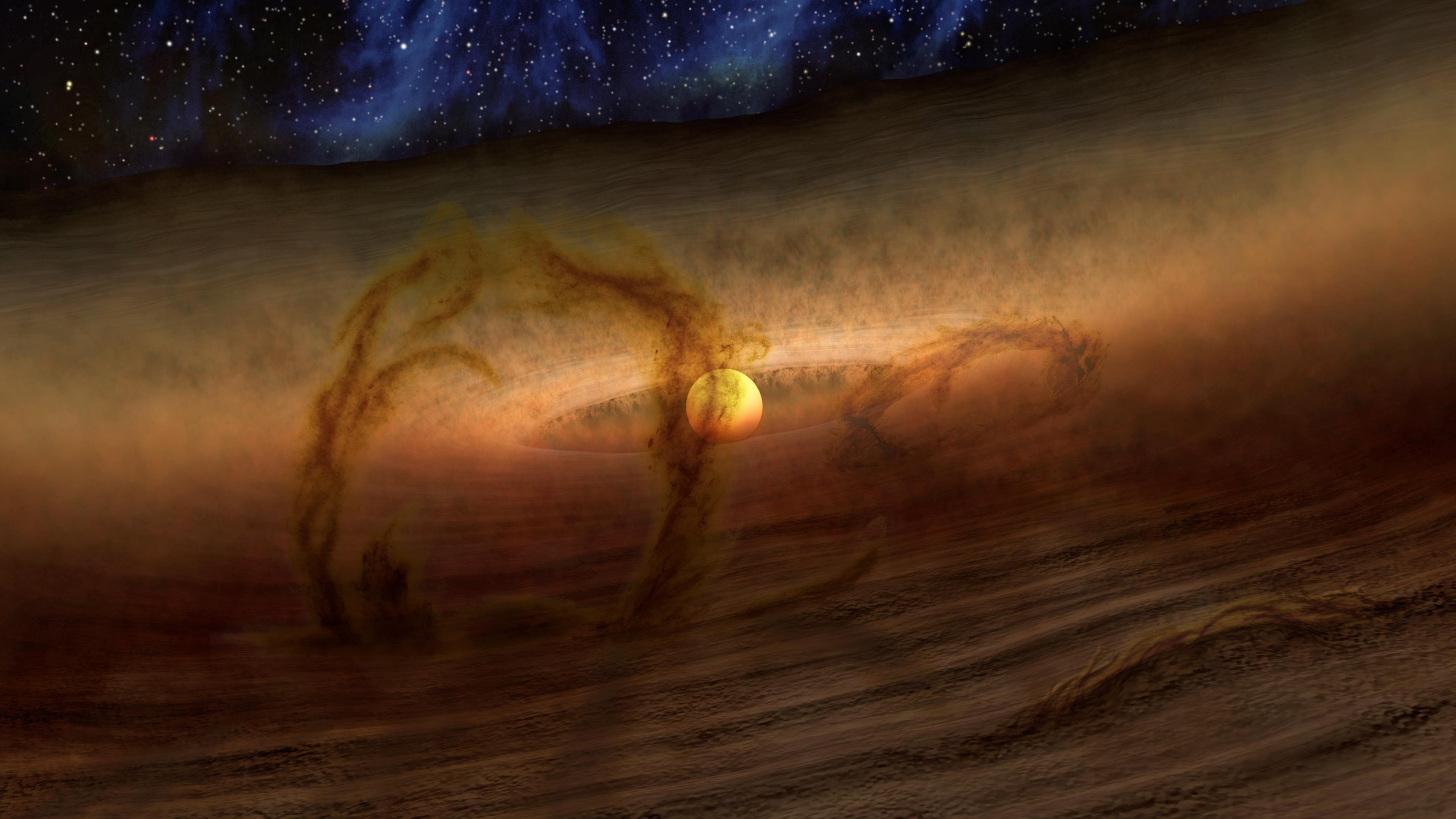NASA’s Webb Space Telescope Discovers Water Vapor in Rocky Planet-Forming Zone

NASA’s Webb Space Telescope Discovers Water Vapor in Rocky Planet-Forming Zone
The discovery of water vapor in the inner disk of the PDS 70 planetary system, as observed by NASA’s James Webb Space Telescope, presents intriguing possibilities for understanding the origins of water on Earth and other rocky exoplanets. The PDS 70 system, located 370 light-years away, consists of an inner and outer disk separated by a sizable gap containing two gas-giant planets.
The data from the James Webb Space Telescope’s MIRI (Mid-Infrared Instrument) offer valuable clues about the water distribution within the PDS 70 system and opens up exciting avenues for further research. Understanding the presence and distribution of water in planetary systems like PDS 70 could shed light on the broader cosmic processes responsible for the presence of water on Earth and the potential for habitability on exoplanets orbiting distant stars.
The discovery of water vapor in the inner disk of the PDS 70 planetary system has been met with great excitement among astronomers. Lead author Giulia Perotti from the Max Planck Institute for Astronomy (MPIA) in Heidelberg, Germany, expressed the significance of the finding, emphasizing that such a measurement was not possible before the James Webb Space Telescope (JWST).

MPIA director Thomas Henning, a co-author on the paper, highlighted the significance of this discovery in probing the region where rocky planets similar to Earth typically form. This discovery provides a unique opportunity to study the environment in which rocky planets come into existence.
PDS 70, the star system under investigation, is a K-type star, cooler than our Sun, and it is estimated to be around 5.4 million years old. The presence of water vapor in such a relatively old star system with planet-forming disks is unexpected and intriguing.
The findings from the JWST’s MIRI instrument have opened up new possibilities for understanding how water might be delivered to rocky planets during their formation. This discovery also sheds light on the conditions and processes involved in the creation of rocky exoplanets, providing valuable insights into planetary system evolution. The detection of water vapor in the inner disk of the PDS 70 system brings us closer to unraveling the mysteries of water’s role in shaping the cosmos and its potential implications for habitability on exoplanets.
The presence of water vapor in the inner disk of the PDS 70 planetary system has surprised astronomers, as previous studies of similarly aged disks failed to detect water in the central regions. The decline in gas and dust content in planet-forming disks over time is a natural process, either due to the central star’s radiation and winds blowing out the material or the dust coalescing into larger objects that eventually form planets.

Astronomers suspected that the harsh stellar radiation might prevent water from surviving in the central regions of such disks, leading to a dry environment for the formation of rocky planets. However, the recent discovery of water vapor in the inner disk of PDS 70 challenges this assumption. This finding suggests that water can indeed survive in this region, providing an essential ingredient for the potential formation of rocky planets.
While astronomers have not yet detected any planets forming within the inner disk of PDS 70, they have observed the presence of raw materials for building rocky worlds in the form of silicates. The detection of water vapor implies that if rocky planets are forming in this region, they will have water available to them from the very beginning of their formation process. This discovery brings us closer to understanding the conditions and processes that contribute to the birth of planetary systems and the potential for habitable environments on exoplanets.
The presence of water vapor in the inner disk of the PDS 70 planetary system has raised the question of its origin. The team of scientists behind the discovery considered two different scenarios to explain the presence of water in this region.
One possibility is that water molecules are forming in situ, meaning that hydrogen and oxygen atoms are combining directly in the inner disk to create water molecules. This process would suggest that water can be produced locally within the disk itself.

Another possibility is that ice-coated dust particles from the cool outer disk are being transported to the hot inner disk. In this scenario, the water ice on the dust particles would sublimate (change directly from a solid to a vapor) as they move closer to the star, creating water vapor in the inner disk. However, this transport system would be surprising, as the dust particles would have to cross a large gap created by the presence of two giant planets within the disk.
Both scenarios have implications for our understanding of the dynamics and processes occurring within planet-forming disks. Further observations and research will be needed to determine the exact origin of the water vapor in the PDS 70 inner disk and shed light on the intriguing processes that govern the formation of planetary systems.
The discovery of water vapor in the inner disk of the PDS 70 planetary system has raised questions about how the water can survive so close to the star, where the intense ultraviolet light should break apart water molecules. Astronomers believe that the surrounding material, such as dust and other water molecules, could act as a protective shield, allowing the water to survive destruction from the star’s radiation.
To further study the PDS 70 system and gain a deeper understanding, the team of scientists plans to use two more of Webb’s instruments: NIRCam (Near-Infrared Camera) and NIRSpec (Near-Infrared Spectrograph). These instruments will provide more detailed observations of the system, potentially revealing additional insights into the presence and dynamics of water and other components in the inner disk.

The observations of the PDS 70 system were conducted as part of the Guaranteed Time Observation program 1282, and the findings have been published in the journal Nature. The study of this planetary system and others like it is crucial for advancing our understanding of planet formation and the potential for habitability in other star systems.




